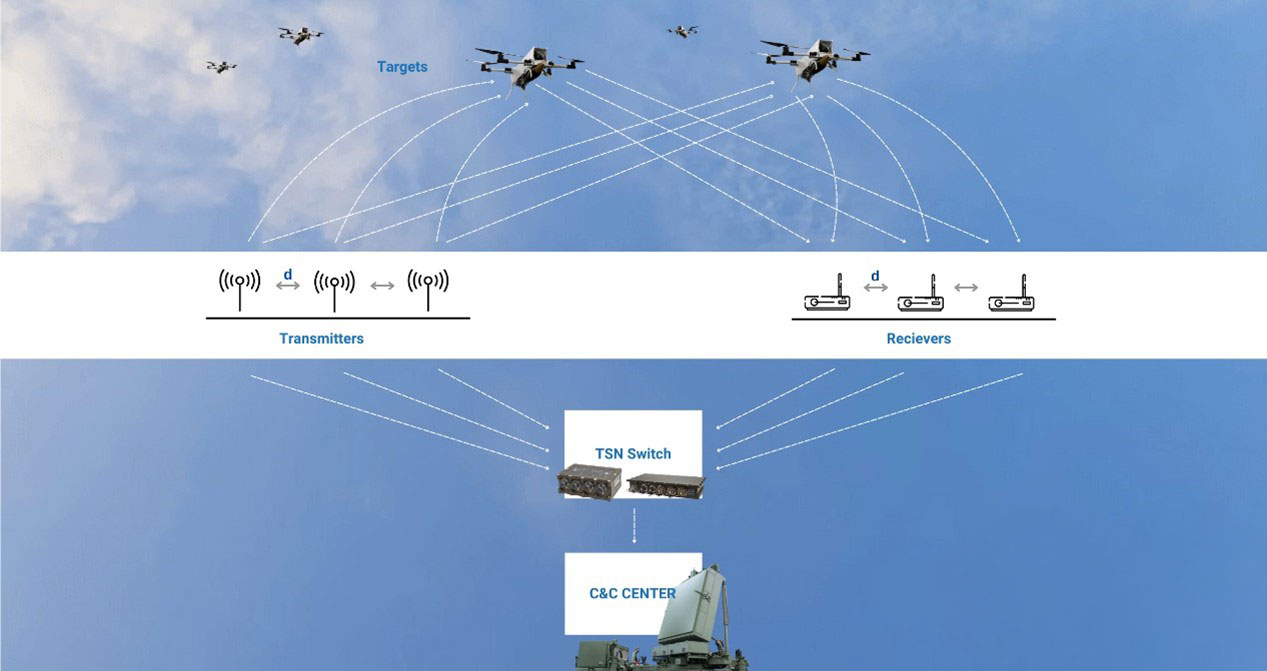Time-Sensitive Networking (TSN) is redefining precision in network synchronization and real-time communication, especially in defense and drone detection systems. TSN builds upon foundational synchronization protocols like Network Time Protocol (NTP), Precision Time Protocol (PTP), and Synchronous Ethernet (SyncE), addressing the critical demands of military-grade applications.
Advancements in Synchronization Technologies
NTP provides basic time synchronization suitable for non-critical systems, while PTP achieves microsecond-level precision, indispensable for military operations where timing discrepancies can compromise mission success. SyncE ensures consistent frequency synchronization across Ethernet networks, maintaining reliable and predictable data transfer.
TSN advances these capabilities with a suite of IEEE standards optimized for deterministic, low-latency communication. This is vital in military scenarios such as battlefield communication networks, autonomous vehicles, and integrated weapon systems. TSN leverages precise time synchronization, traffic scheduling, and path control to ensure mission-critical data is delivered without delay. For instance, TSN enables real-time synchronization between command centers and field units, improving situational awareness and decision-making.
Why TSN Is Crucial for Defense Systems
Modern military operations demand robust, real-time communication frameworks. TSN’s deterministic communication capabilities make it a cornerstone for next-generation defense technologies, including:
- Coordinated Drone Swarms: Ensures precise communication and coordination among multiple drones, enabling complex swarm maneuvers.
- Real-Time Situational Awareness: Synchronizes data streams from diverse sensors, providing commanders with actionable intelligence in near real-time.
- Secure, Resilient Communication: Delivers robust encryption and data integrity, ensuring secure transmission even in contested environments.
In these contexts, TSN provides a framework that supports both current and emerging military requirements, enhancing operational efficiency and mission effectiveness.
Challenges in Drone Detection
Detecting modern drones presents unique challenges due to their compact size, low radar cross-sections, and high agility. These unmanned aerial vehicles (UAVs) often resemble birds on radar, complicating identification. Additionally, drones can operate in swarms, overwhelming conventional radar systems. Their use of low-power radio frequencies allows them to blend into electromagnetic noise, evading standard detection systems.

How TSN Enhances Advanced Drone Detection Systems
TSN plays a transformative role in enhancing radar and sensor systems designed for drone detection. By providing deterministic, low-latency communication, TSN ensures that crucial data—such as the location, velocity, and trajectory of drones—is transmitted and processed with precision. Key advantages include:
- Superior Detection Accuracy: TSN synchronizes inputs from multiple radar and sensor systems, enabling precise tracking of drones with minimal radar visibility.
- Rapid Response Capabilities: Real-time data processing allows immediate threat identification and actionable responses.
- Comprehensive Airspace Analysis: TSN’s integration of sensor data creates a unified operational picture, distinguishing UAVs from other objects with greater reliability.
These capabilities allow defense systems to track and counter fast-moving threats effectively, making TSN a critical component in safeguarding military installations, sensitive infrastructure, and restricted airspace.
Conclusion
Time-Sensitive Networking (TSN) is revolutionizing drone detection and military communication systems. By addressing the challenges of modern UAVs, including low radar cross-sections and swarm dynamics, TSN ensures precise, real-time data transmission and synchronization. Its integration into advanced radar systems enhances situational awareness, response capabilities, and overall airspace security.
As defense technologies evolve, TSN’s role as a foundational enabler of secure, efficient, and mission-critical communication systems will continue to expand. From drone detection to battlefield management, TSN is driving innovations that redefine operational success in today’s increasingly complex military landscape.
